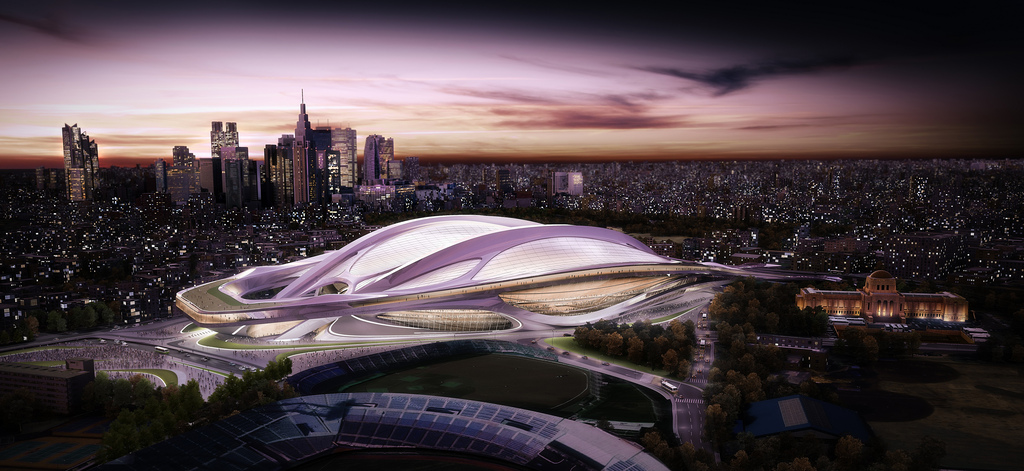Last week, Japan Prime Minister Shinzo Abe announced that the country was scrapping its plans for Tokyo's Olympic Stadium and that a different project would be started from scratch.
According to The Japan Times, the new plans have been set in motion. Construction on the stadium that will serve as the hub of the 2020 Tokyo Olympics will begin in January or February, and a first draft of the stadium's functions, along with a cost projection report, will be completed by the fall. A new design and builder will be selected as well.
Hakubun Shimomura, Japan's Minister of Education, Culture, Sports, Science and Technology, said that a third-party will look into how construction costs for the previous stadium plan grew from 130 billion yen ($1.05 billion) to more than 252 billion yen (around $2 billion).
The original stadium, an 80,000-seat retractable roof venue designed by Zaha Hadid Architects, was an ambitious project that eventually had a number of flaws. Along with the rising costs and concerns about construction delays, critics said that the stadium interfered with local green space, put a financial burden on future generations, and was unattractive aesthetically.
Pritzker laureates Toyo Ito and Fumihiko Maki started an online petition that urged the country to consider upgrading the existing Meiji Jingo Gaien Stadium instead of displacing citizens who lived around the proposed Olympic Stadium.
Shimomura said that the plan is for the new stadium to open in the spring of 2020, prior to the Olympics.
Related Stories
| Aug 11, 2010
Nurturing the Community
The best seat in the house at the new Seahawks Stadium in Seattle isn't on the 50-yard line. It's in the southeast corner, at the very top of the upper bowl. "From there you have a corner-to-corner view of the field and an inspiring grasp of the surrounding city," says Kelly Kerns, project leader with architect/engineer Ellerbe Becket, Kansas City, Mo.
| Aug 11, 2010
Financial Wizardry Builds a Community
At 69 square miles, Vineland is New Jersey's largest city, at least in geographic area, and it has a rich history. It was established in 1861 as a planned community (well before there were such things) by the utopian Charles Landis. It was in Vineland that Dr. Thomas Welch found a way to preserve grape juice without fermenting it, creating a wine substitute for church use (the town was dry).
| Aug 11, 2010
Integrated Project Delivery builds a brave, new BIM world
Three-dimensional information, such as that provided by building information modeling, allows all members of the Building Team to visualize the many components of a project and how they work together. BIM and other 3D tools convey the idea and intent of the designer to the entire Building Team and lay the groundwork for integrated project delivery.
| Aug 11, 2010
Bronze Award: Alumni Gymnasium Renovation, Dartmouth College Hanover, N.H.
At a time when institutions of higher learning are spending tens of millions of dollars erecting massive, cutting-edge recreation and fitness centers, Dartmouth College in Hanover, N.H., decided to take a more modest, historical approach. Instead of building an ultra-grand new facility, the university chose to breathe new life into its landmark Alumni Gymnasium by transforming the outdated 99-y...







